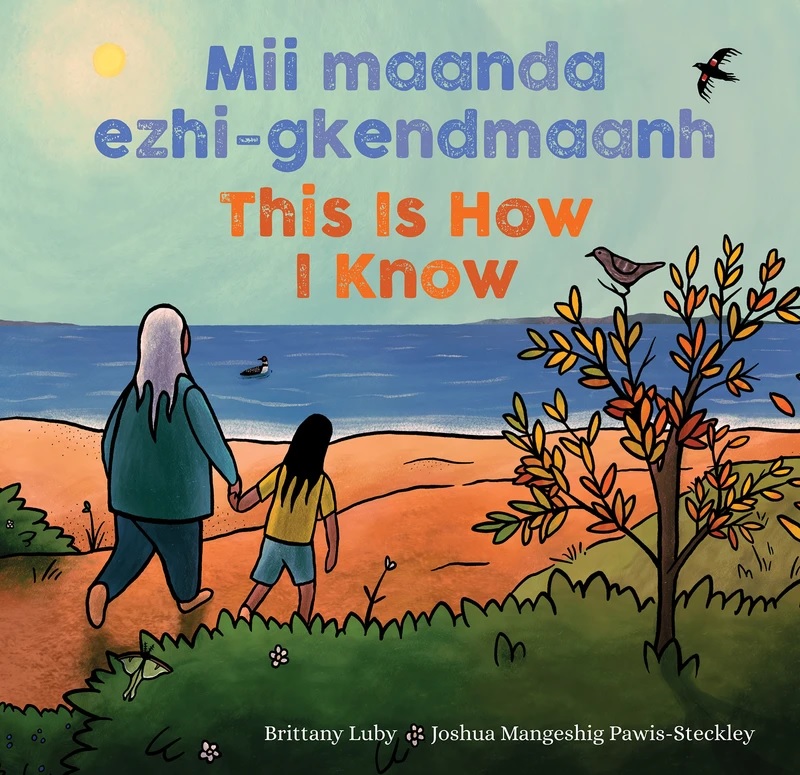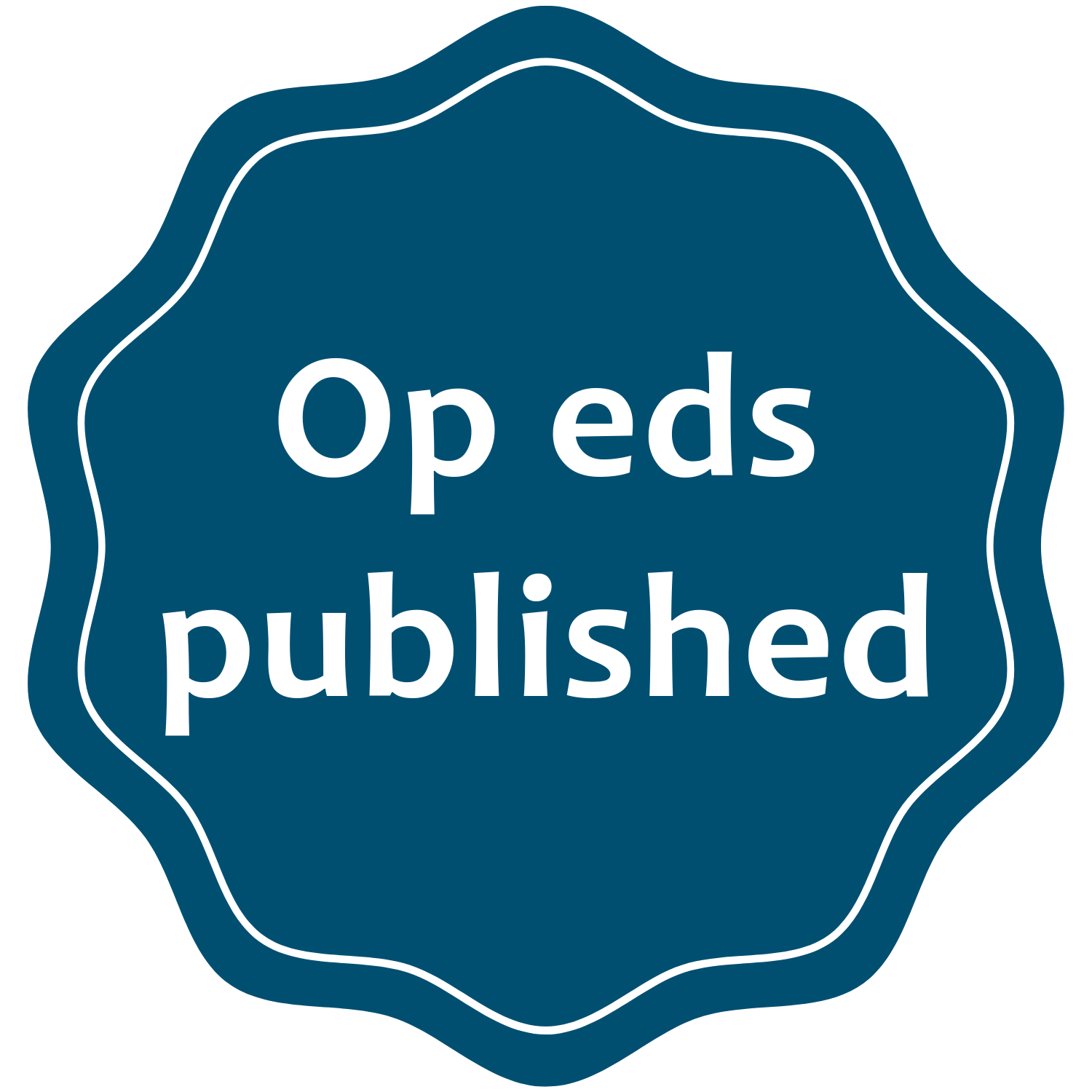
Media
The Champlain Society: Witness to YesterdayRadio/Podcast
Elections Canada apologizes to Ontario First Nations voters unable to cast ballots
CBC News, November 3, 2021Online
URL: https://www.cbc.ca/news/canada/thunder-bay/elections-canada-apology-kenora-1.6234598
Children’s book provides a chance to connect with the changing seasons
Trudeau’s Liberals benefited from record Indigenous voter turnout in 2015. Can they again?
Global News, September 14, 2019Online
URL: https://globalnews.ca/news/5887701/indigenous-voter-turnout/

5 Questions for Brittany Luby [re: Encounter]
Young Adulting, April 6, 2020Online
URL: https://youngadulting.ca/2020/04/06/5-questions-for-brittany-luby/

Mii maanda ezhi-gkendmaanh / This Is How I Know
by Brittany Luby (translated into Anishinaabemowin by Alvin and Alan Corbiere)
Groundwood Books
March 1, 2021
9781773063263
In this lyrical story-poem, written in Anishinaabemowin and English, a child and grandmother explore their surroundings, taking pleasure in the familiar sights that each new season brings.
We accompany them through warm summer days full of wildflowers, bees and blueberries, then fall, when bears feast before hibernation and forest mushrooms are ripe for harvest. Winter mornings begin in darkness as deer, mice and other animals search for food, while spring brings green shoots poking through melting snow and the chirping of peepers.
Author Brittany Luby and illustrator Joshua Mangeshig Pawis-Steckley have created a book inspired by childhood memories of time spent with Knowledge Keepers, observing and living in relationship with the natural world in the place they call home — the northern reaches of Anishinaabewaking, around the Great Lakes.
University of Manitoba Press
October 19, 2020
9780887558740
Dammed explores Canada’s hydroelectric boom in the Lake of the Woods area. It complicates narratives of increasing affluence in postwar Canada, revealing that the inverse was true for Indigenous communities along the Winnipeg River.
Dammed makes clear that hydroelectric generating stations were designed to serve settler populations. Governments and developers excluded the Anishinabeg from planning and operations and failed to consider how power production might influence the health and economy of their communities. By so doing, Canada and Ontario thwarted a future that aligned with the terms of treaty, a future in which both settlers and the Anishinabeg might thrive in shared territories.
The same hydroelectric development that powered settler communities flooded manomin fields, washed away roads, and compromised fish populations. Anishinaabe families responded creatively to manage the government-sanctioned environmental change and survive the resulting economic loss. Luby reveals these responses to dam development, inviting readers to consider how resistance might be expressed by individuals and families, and across gendered and generational lines.
Little, Brown and Company Books for Young Readers
October 1, 2019
9780316449144
Two people navigate their differences with curiosity and openness in this stunning picture book that imagines the first meeting between an Indigenous fisher and a European sailor.
Based on an actual journal entry by French explorer Jacques Cartier from his first expedition to North America in July 1534, this story imagines the first encounter between a European sailor and a Stadaconan fisher. As the two navigate their differences (language, dress, food) with curiosity, the natural world around them notes their similarities. The seagull observes their like shadows, the mosquito notes their equally appealing blood, the mouse enjoys the crumbs both people leave behind.
This story explores how encounters can create community and celebrates varying perspectives and the natural world.
Beyond Institutional Ethics: Anishinaabe Worldviews and the Development of a Culturally Sensitive Field Protocol for Aquatic Plant Research
by Samantha Mehltretter, Robert Flewelling, Margaret Lehman, Gabrielle Goldhar, Elli Pattrick, Jane Mariotti, Andrea Bradford, and Niisaachewan Anishinaabe Nation
Published by Water
The Tri-Council Policy Statement: Ethical Conduct for Research Involving Humans (TCPS2) guides knowledge production and dissemination in Canada. While it is intended to protect vulnerable populations from harm, it fails to consider Anishinaabe worldviews and, by extension, to effectively direct ethical water research with aquatic plant life. Using Anishinaabe oral testimony and oral stories, Niisaachewan Anishinaabe Nation (NAN) and the University of Guelph (UofG) co-developed a culturally sensitive field protocol to respect Manomin (Wild Rice) as an other-than-human being and guide research into Manomin restoration. By illuminating key directives from NAN, this article showcases the limitations of institutional ethics in Canada. It concludes with recommendations to broaden TCPS2 to better address Anishinaabe teachings about plant and animal relations, but ultimately challenges institutional Research Ethics Boards (REBs) to relinquish control and respect Indigenous Nations’ right to govern research within their territories.
Biography
Brittany Luby, whose paternal ancestors originate from Niisaachewan Anishinaabe Nation, is an award-winning researcher who specializes in Crown-Indigenous relations.
Luby seeks to stimulate public discussion of Indigenous issues through her critical and creative work. The Canadian Historical Association has described Luby’s historical research as “innovative in its structure and responsive to Indigenous research methodologies. The New York Times described her first children's book, Encounter, as a "standout."
She is currently the Qualitative Research Lead on @manominproject, a research initiative focused on restoring Anishinaabe crops and revitalizing cultural foodways.


